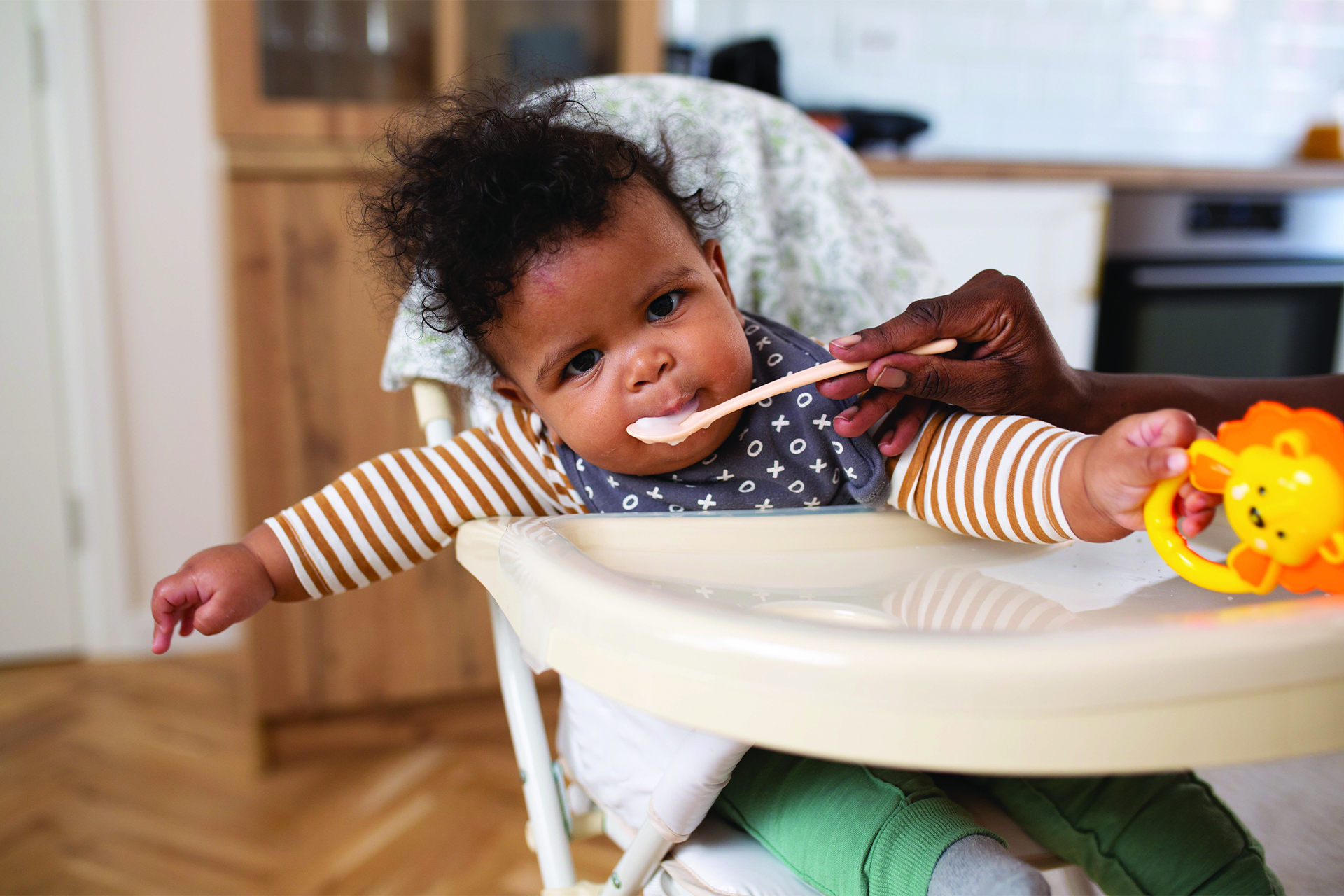
Q&A: Starting Solid Foods Safely
- Home
- Live Well Blog
- Q&A: Starting Solid Foods Safely
How will I know when my baby is ready to start eating solid foods?
Your baby is ready to eat solid foods when they can hold up their head, sit up with support and shows interest in your foods. The American Academy of Pediatrics (AAP) suggests starting babies on solids around 6 months of age.
How much food should I feed my baby?
Your baby may only eat a taste at first; the amount they eat will increase gradually. Remember, your baby is in charge of how much to eat — don’t force them to finish what’s in the bowl or on their plate.
Should I keep chest/breastfeeding my baby once they start solids?
Yes! The AAP recommends chest/breastfeeding for at least a year or longer. Your baby will still get most of their calories from human milk (or formula). Since they may fill up on human milk, offer the solid food before they nurse.
What is a good first food for my baby to try?
Start with iron-rich foods like pureed meats and iron-fortified cereals.
How will I know if my baby is full?
Watch your baby to see if they are pulling away, closing their mouth, or leaning back. An older baby may push food away or start playing with their food.
My friend’s son has food allergies. How do I make sure my baby doesn’t get food allergies?
Give your baby one new food at a time.
Wait at least a few days between introducing another new food to watch for signs of allergy. If you mix foods, you may not be able to figure out which food is causing the allergy. Research shows that continuing to chest/breastfeed when introducing gluten-containing foods can lower a baby’s risk of developing gluten intolerance (also called celiac disease). Gluten is a protein found in wheat, barley and rye.
Be sure to share these tips with anyone who helps take care of your baby!